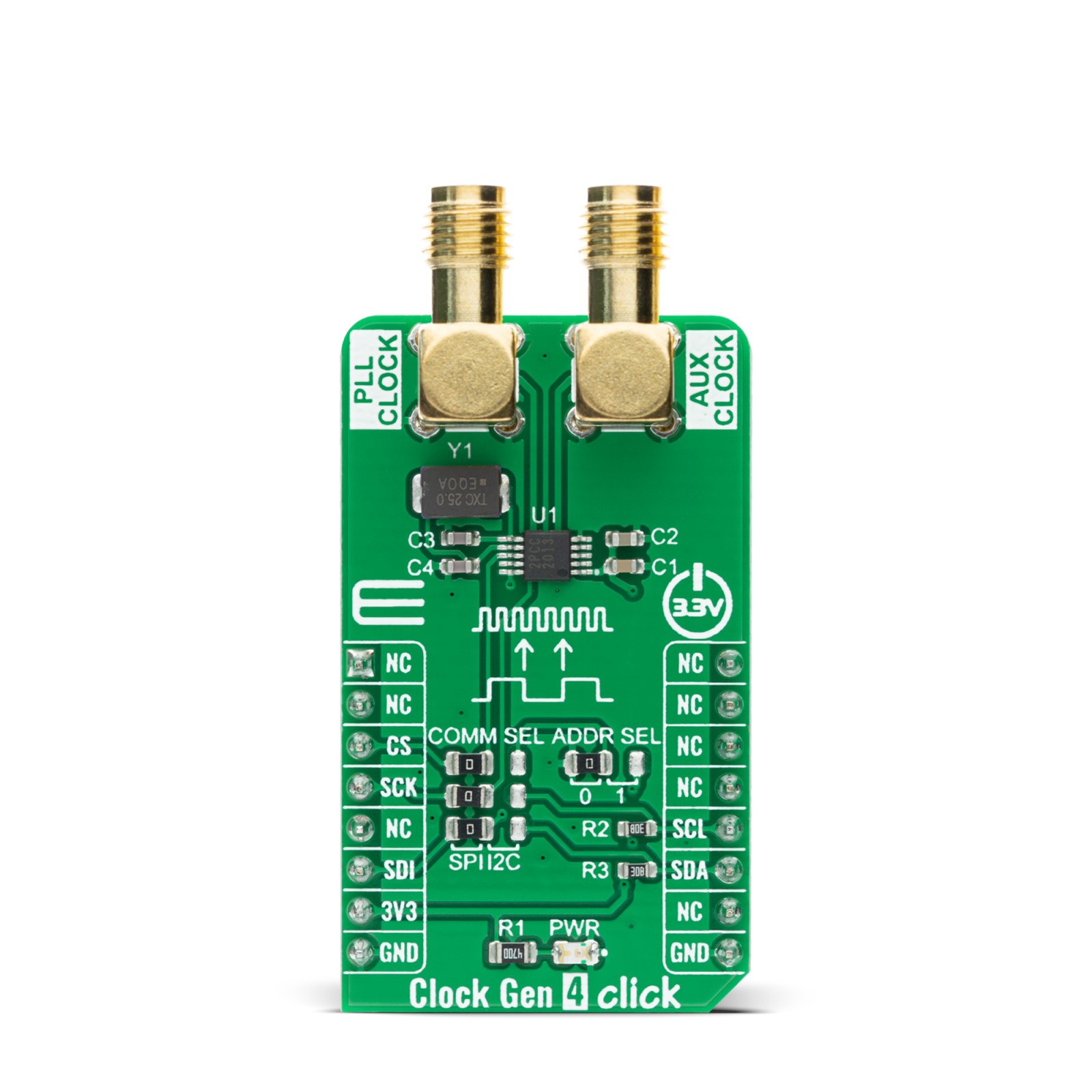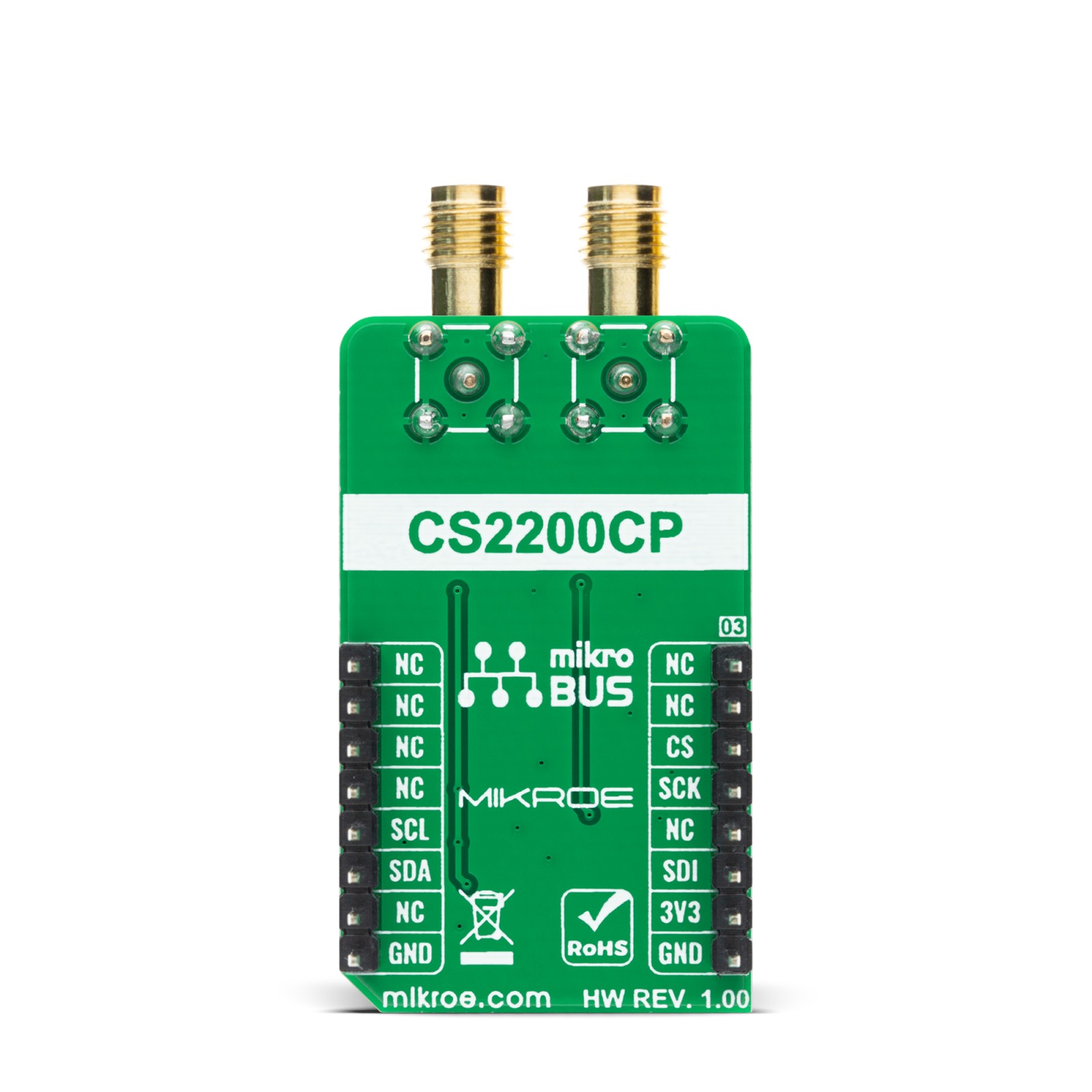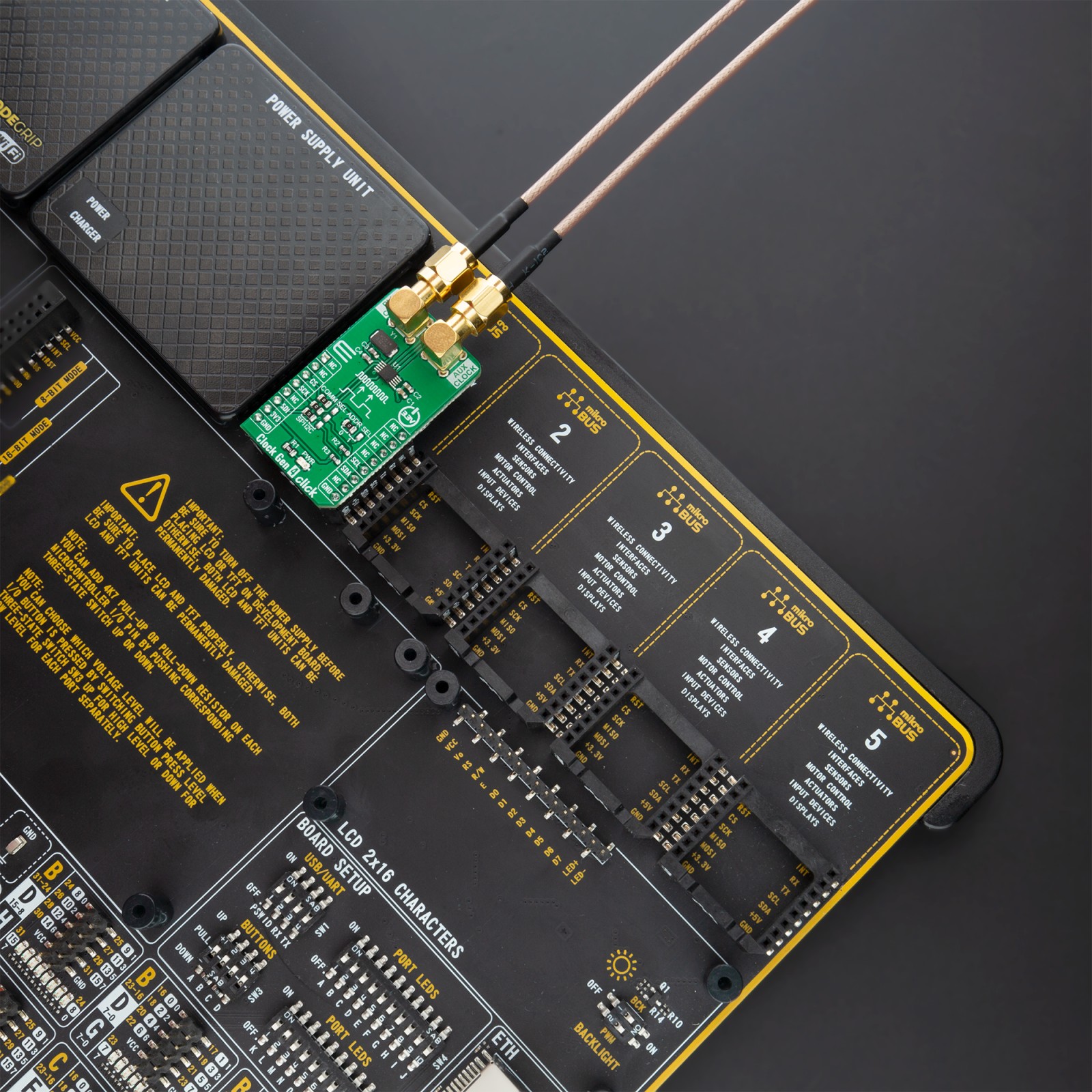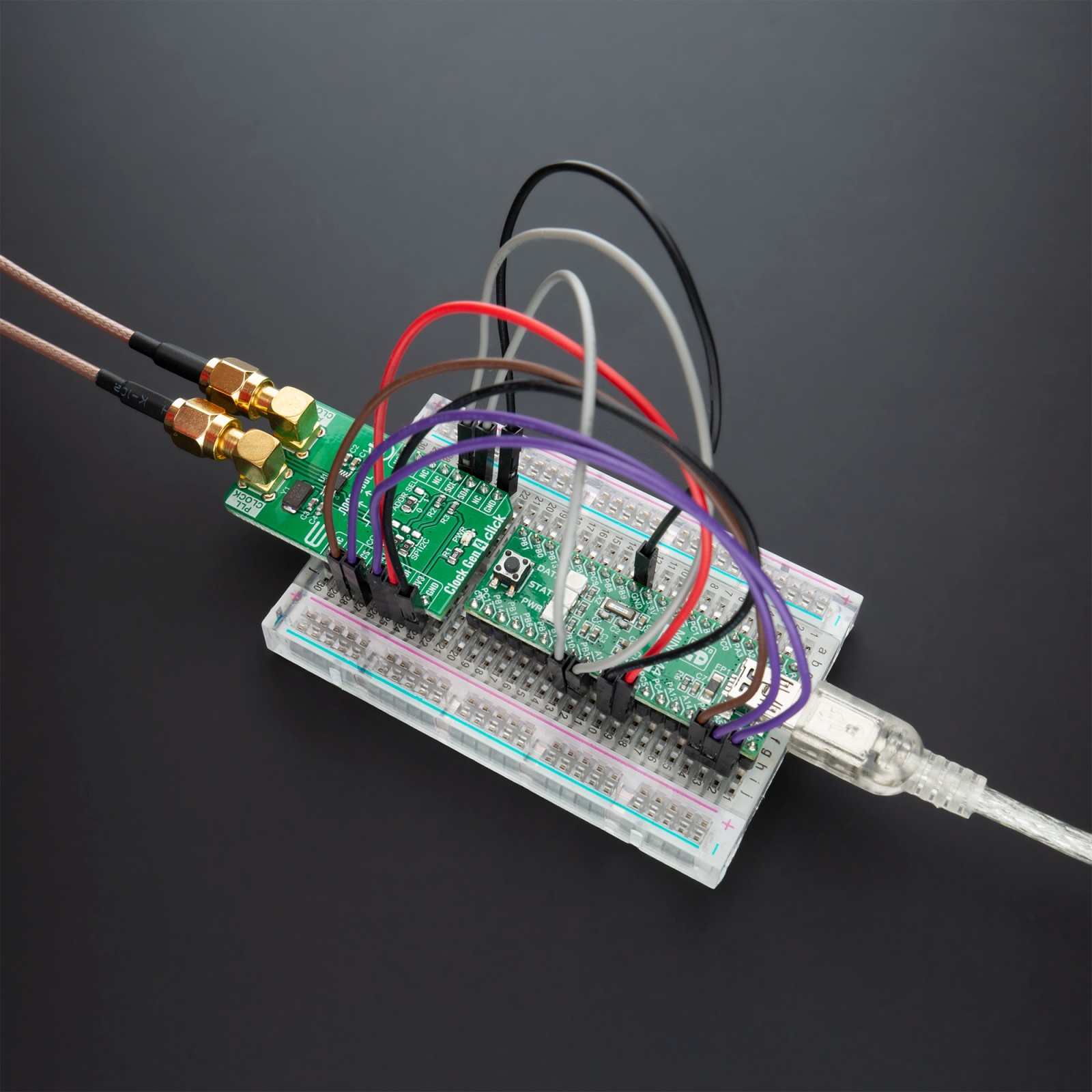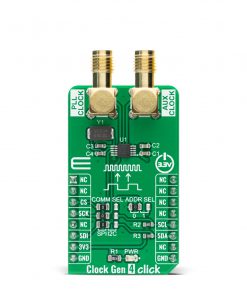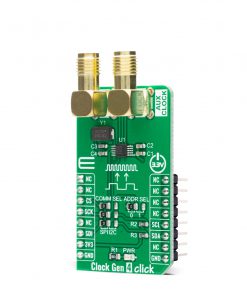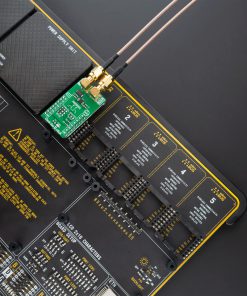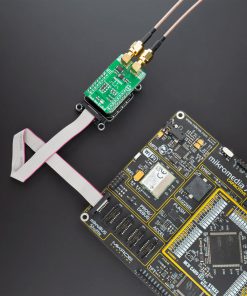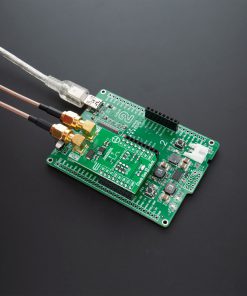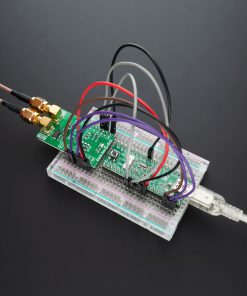Clock Gen 4 Click
R485.00 ex. VAT
Clock Gen 4 Click is a compact add-on board that contains both a clock generator and a multiplier/jitter reduced clock frequency synthesizer. This board features the CS2200-CP, an analog PLL architecture comprised of a Delta-Sigma fractional-N frequency synthesizer from Cirrus Logic. This clocking device utilizes a programmable phase lock loop and allows frequency synthesis and clock generation from a stable reference clock. It generates a low-jitter PLL clock from an external crystal, supports both I²C and SPI for full software control, and also has configurable auxiliary clock output. This Click board™ is suitable for MCU clock source, or in applications like digital effects processors, digital mixing consoles, and many more.
Clock Gen 4 Click is supported by a mikroSDK compliant library, which includes functions that simplify software development. This Click board™ comes as a fully tested product, ready to be used on a system equipped with the mikroBUS™ socket.
Stock: Lead-time applicable.
| 5+ | R460.75 |
| 10+ | R436.50 |
| 15+ | R412.25 |
| 20+ | R396.73 |

